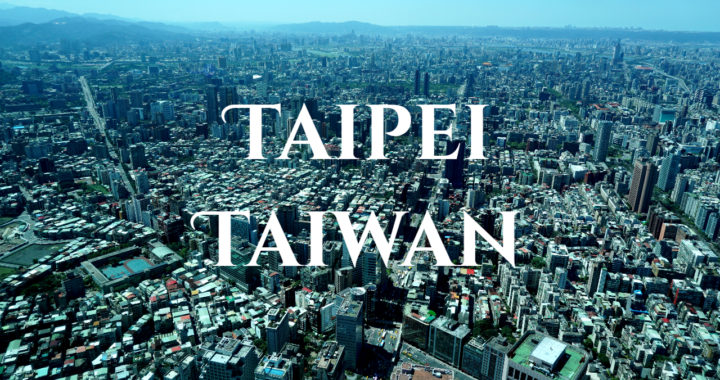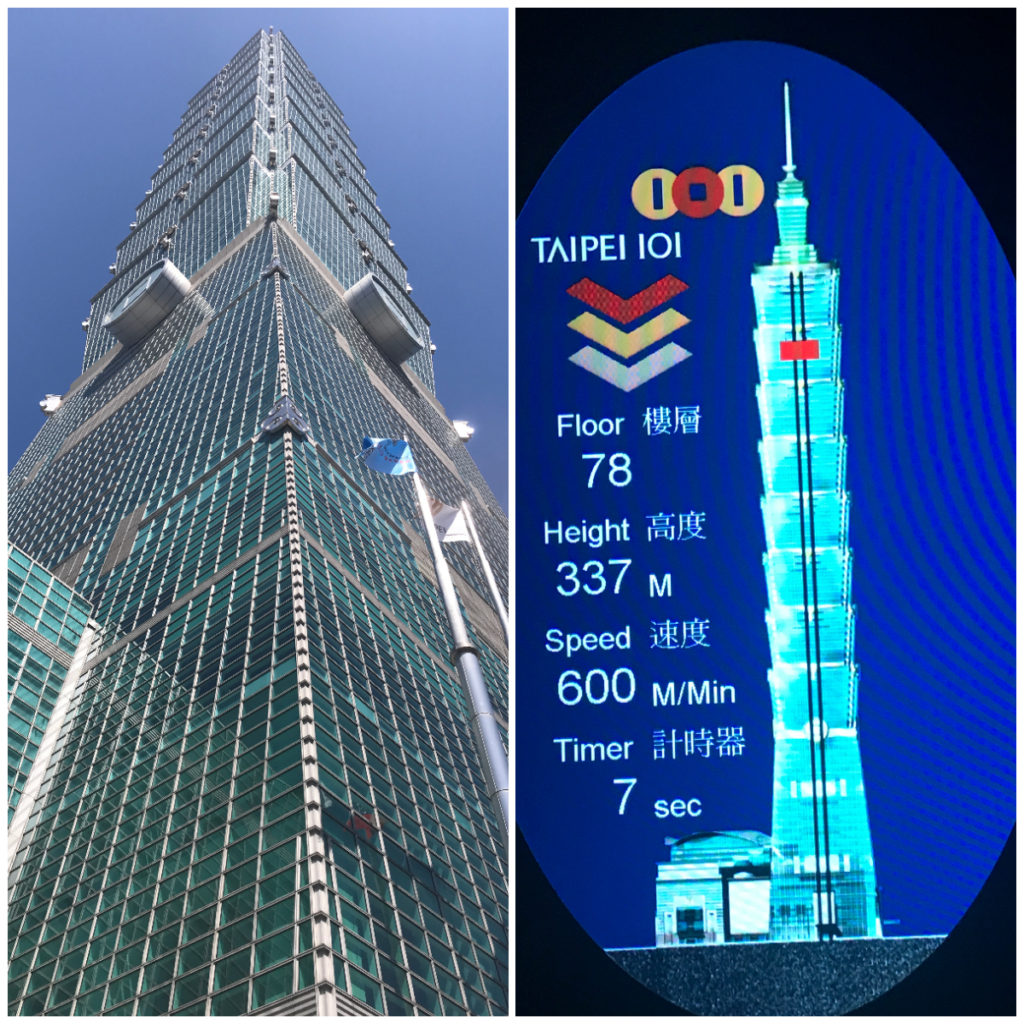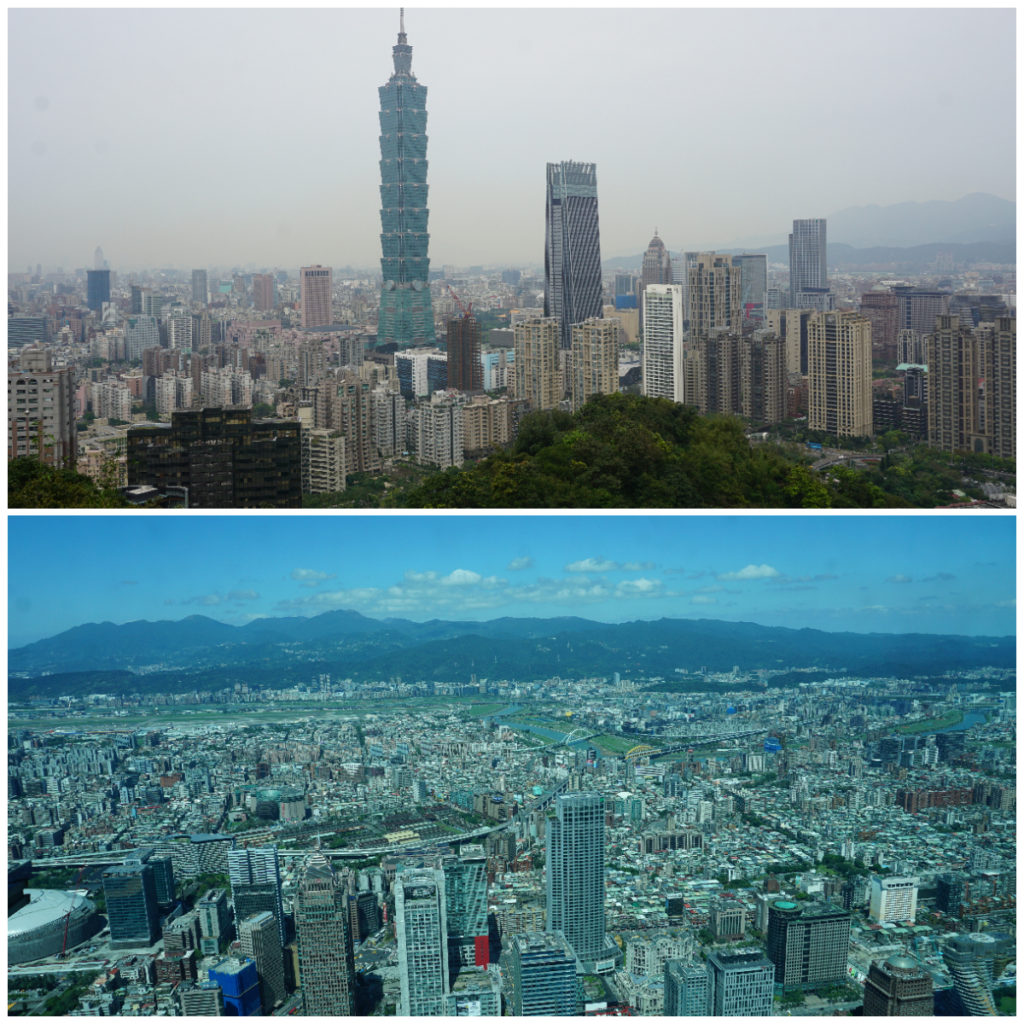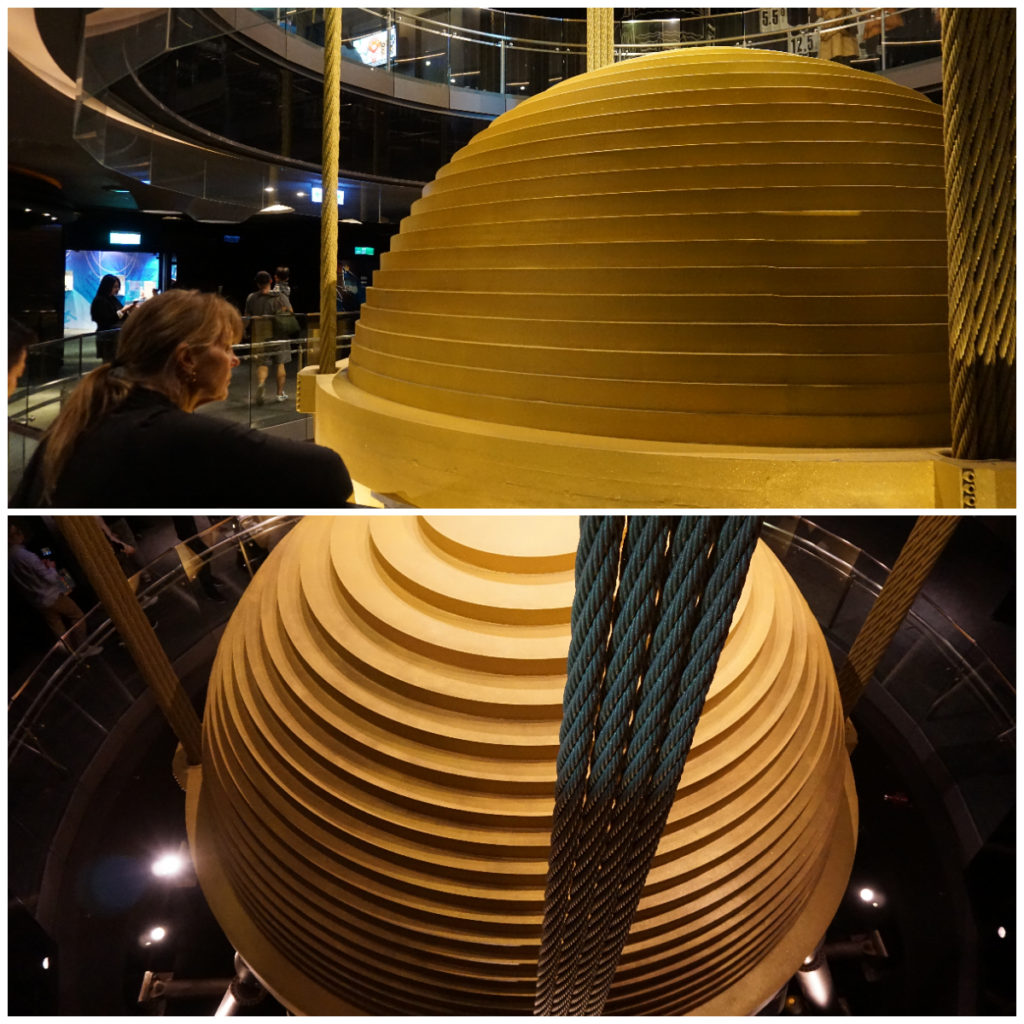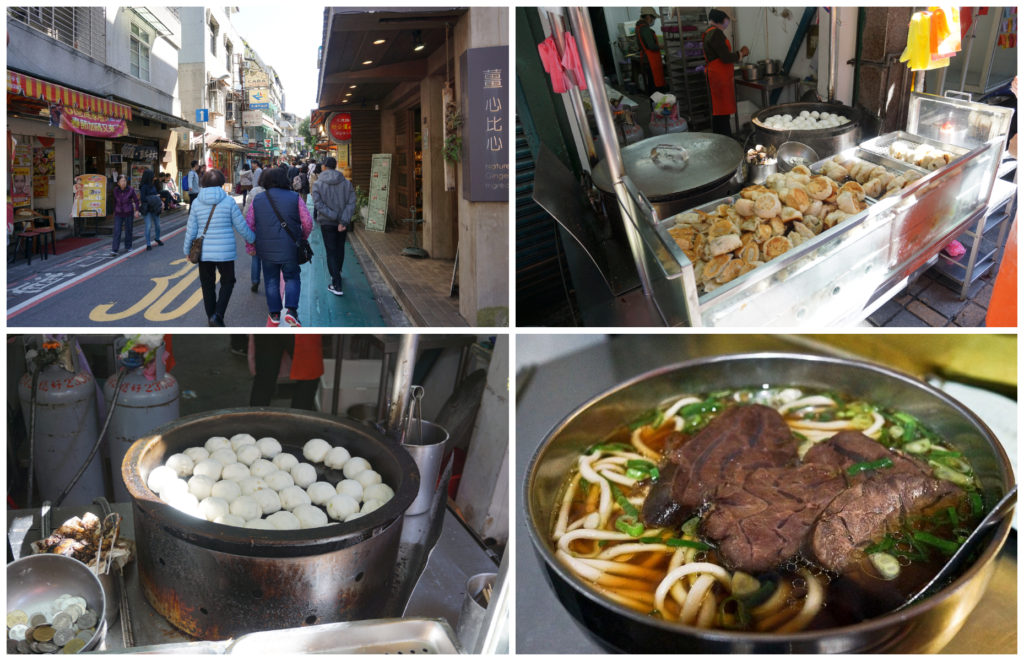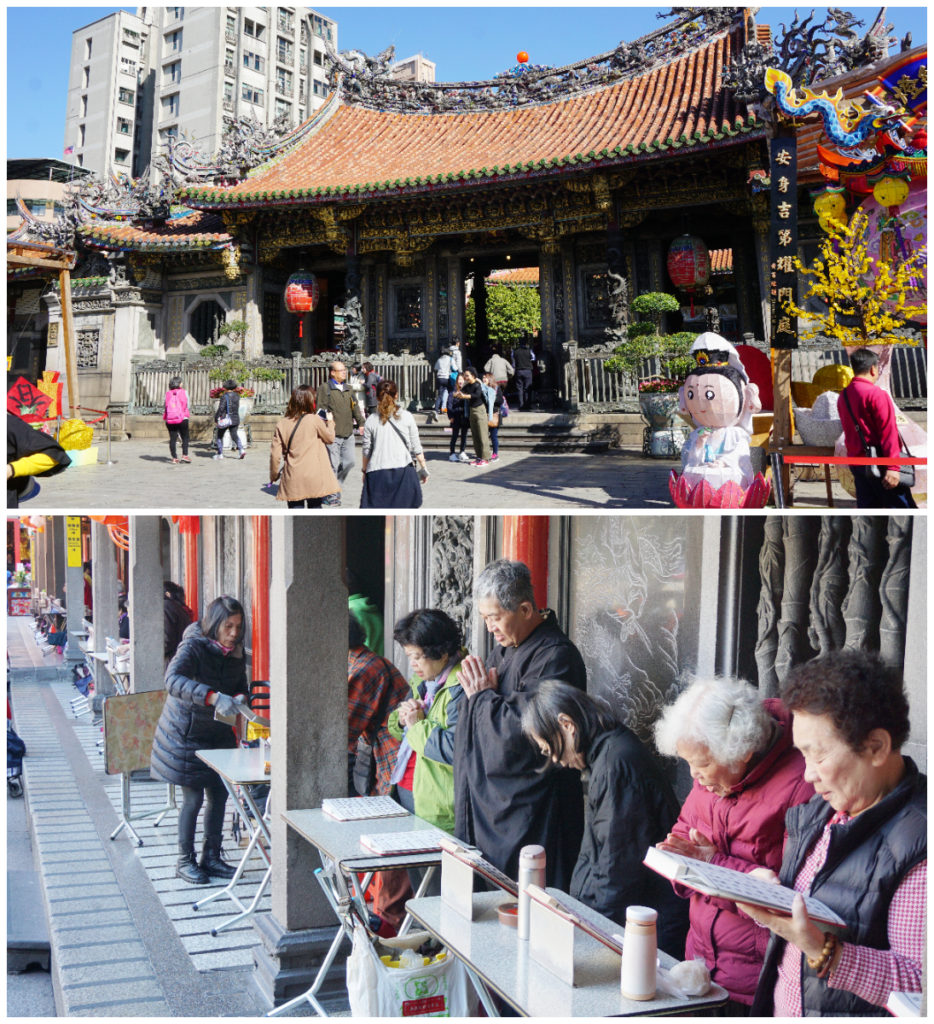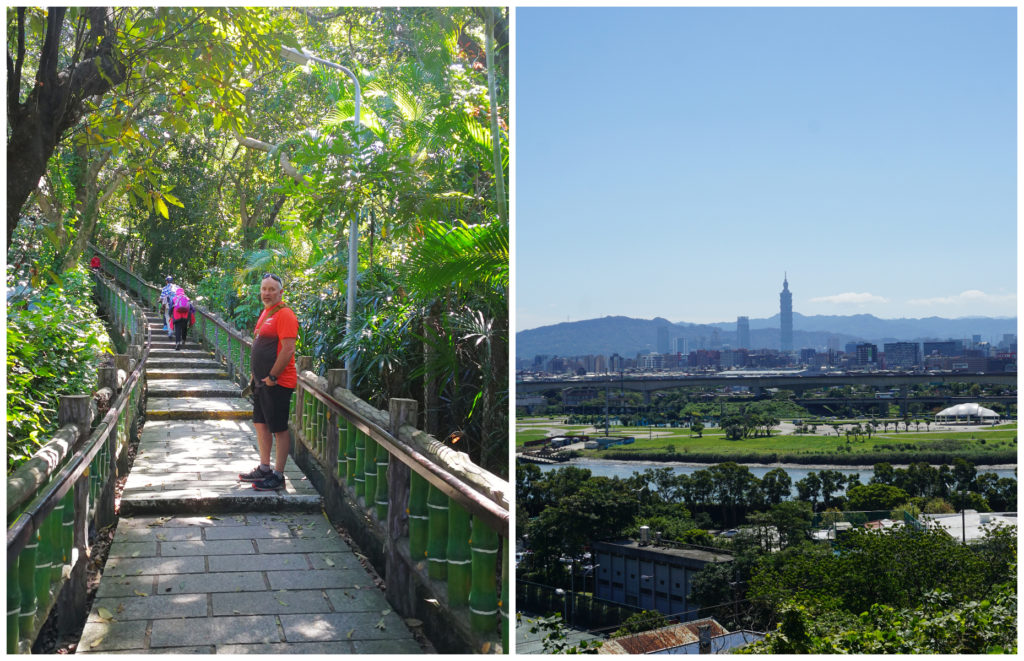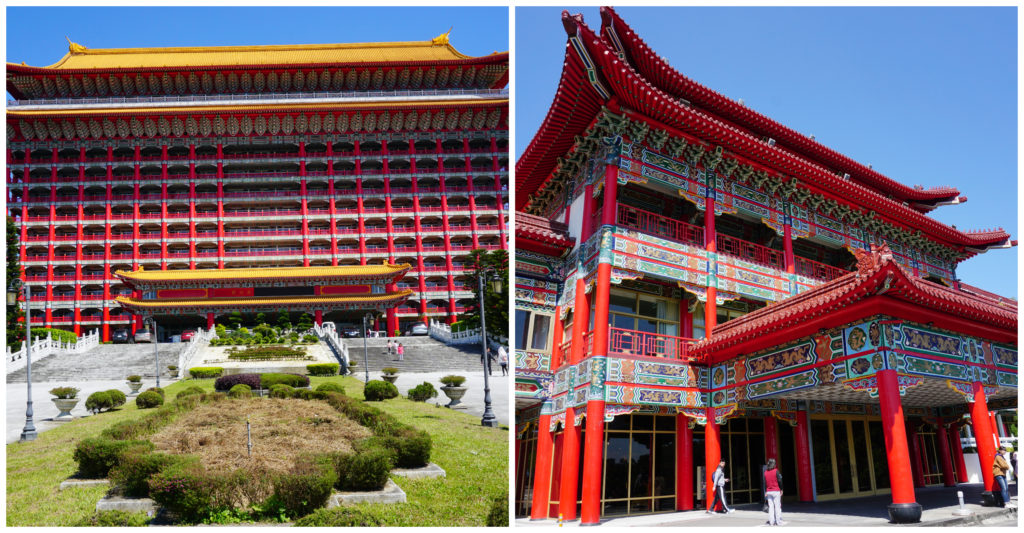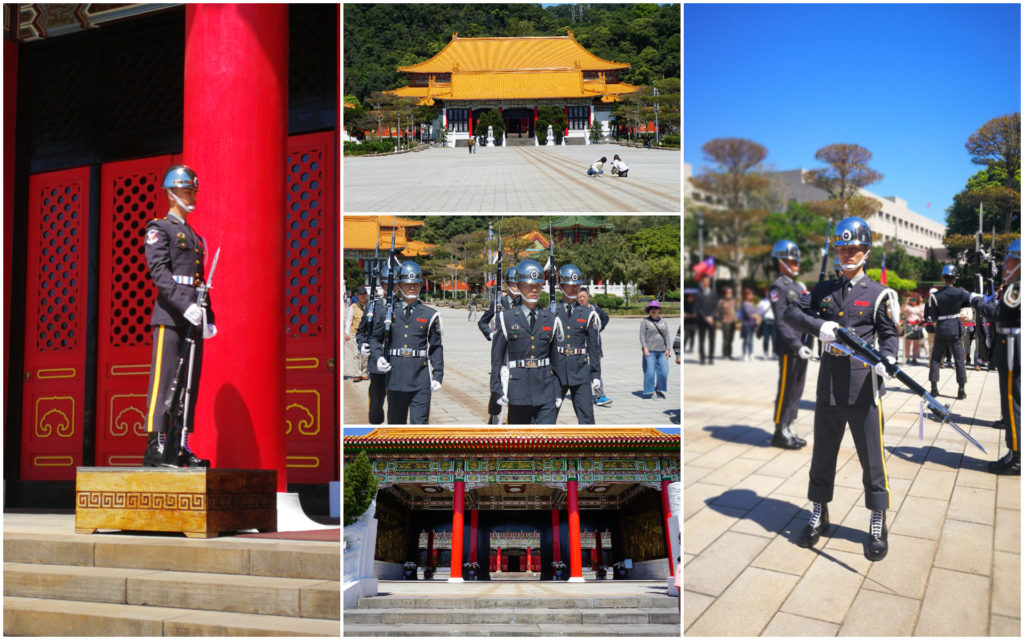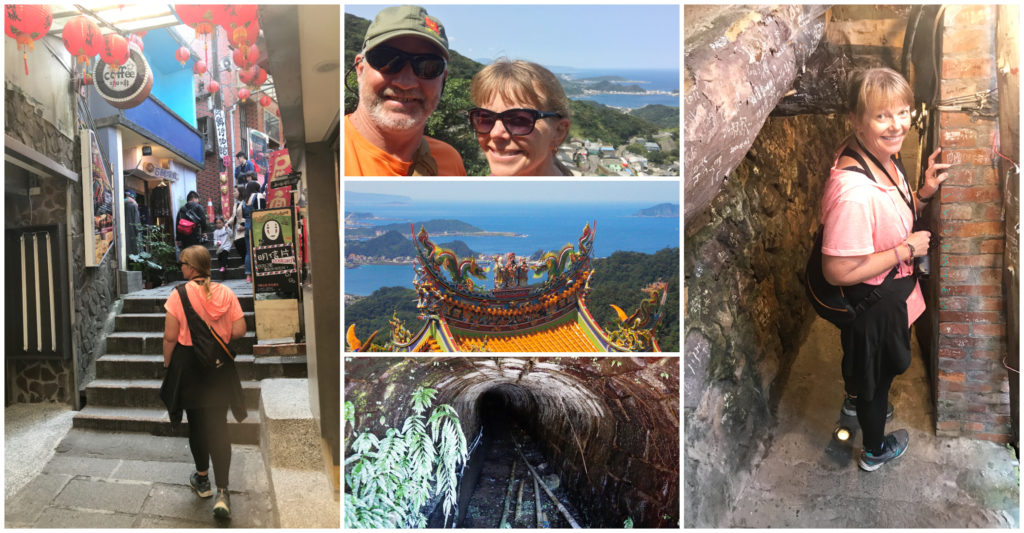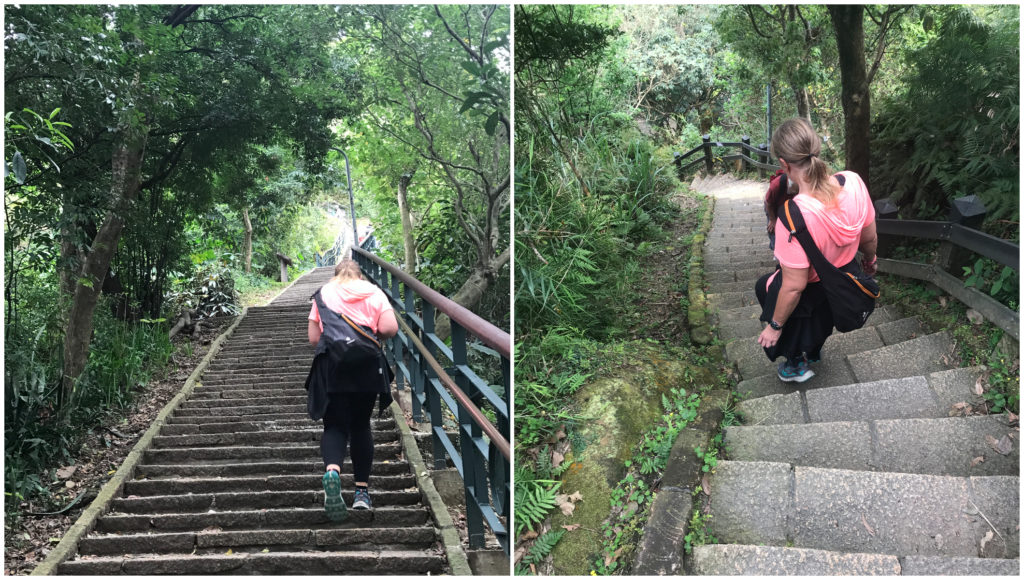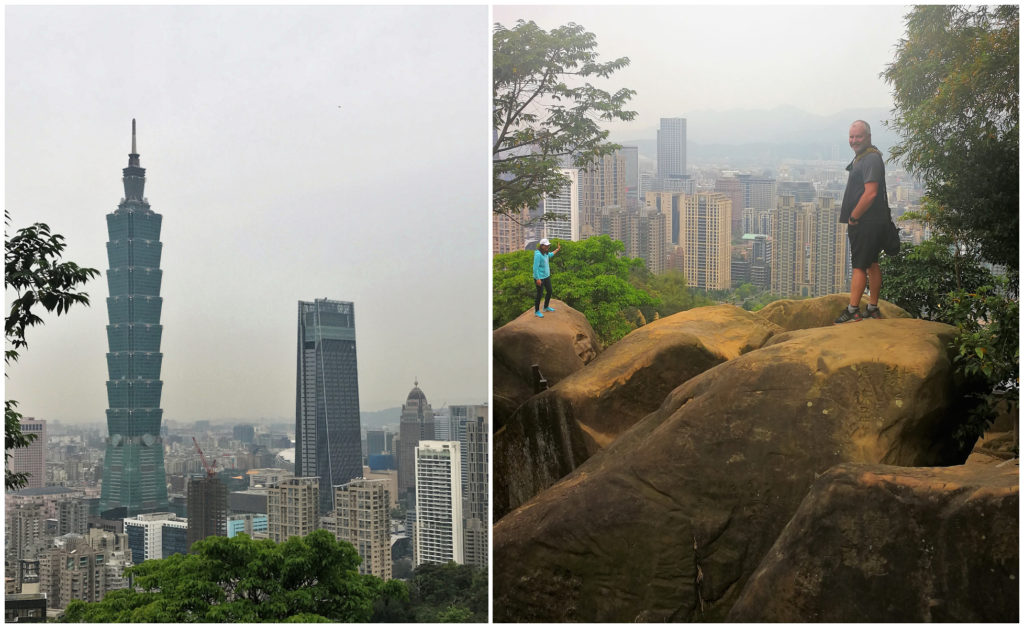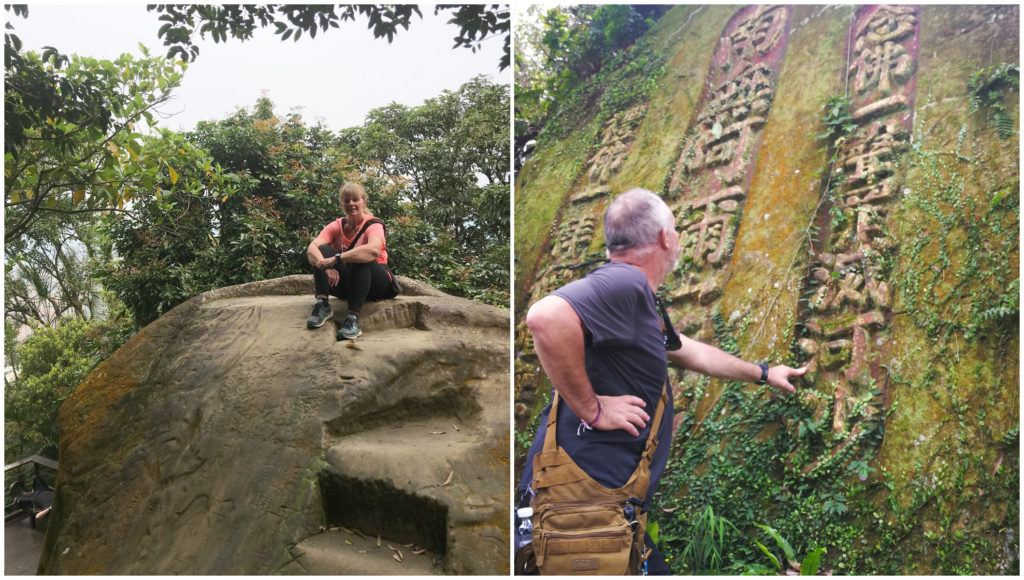Sun Moon Lake to Taipei
We were back on the THSR (Taiwan High-Speed Railway) from Taichung through to Taipei. We were considering a visit and stay at the settlement of Alyshan which is over a 3-hour drive south of Sun Moon Lake (145km). The most direct access by mini-bus was closed because of slips. Apparently, this is quite common so it always pays to check conditions before making bookings and embarking on a journey.
Our train trip from Taichung to Taipei took only 45 minutes (170kms) so it was the easiest choice. It cost us $1400TWD/$66NZ for both of us.
We chose Taipei as a ‘stay-put’ for the rest of our time in Taiwan (7 nights) as most of the attractions we wanted to see was within a day trip from Taipei thanks to their efficient transport systems.
It can be easier to negotiate a better deal on your accommodation the longer you stay.
Another contributing factor why we thought it might be best to head to Taipei was I was getting quite sick by this stage. What started off a tickle in my throat turned not only into a head cold but full-blown bronchitis with more fluid in my lungs than a swimming pool.
Accommodation
The challenge was on again to find something suitable, at a reasonable price. As we were staying put for a week, we wanted something that was a bit more comfortable than a closet-size room with no windows. Once again, location was key for us with good access to public transport.
We settled on City Suites – Beimen. We paid $16,058TWD/$766NZ for seven nights (excluding breakfast).
Out and About in Taipei
Because of my state of well being (and that I was a snivelling wheezing zombie), we decided to keep our sightseeing within the city limits for the next few days.
Before you can get to know any city, you need to conquer the public transport system. With our iPass, we could keep topping up the balance and hop on and off any train or bus in the city. This is where Scotty comes into his element. He masters subway systems like a boss. I find the places we need to see and he finds a way to get us there.
The Taipei train system is one of the easier systems to learn (says she that just follows and never takes any notice of platforms let alone what line we’re on). I just ask him as we alight the train, how many stops till we have to get off so I’m not left behind. I don’t even know what direction the train is coming from.
Taipei 101
You certainly can’t miss the towering Taipei 101. It was specifically designed to resemble a gigantic bamboo stalk. At 508m, it held the title of the world’s tallest building for a number of years. That was until the Burj Khalifa in Dubai was completed and took the title.
It has also had the title of the world’s fasted elevator which has now been awarded to the Shanghai Tower in China. Even so, we were still transported at 60km per hour from the 5th to 89th floor in 37 seconds. No wonder my ears popped a couple of times!
There are 5 basement levels and 101 floors above ground. It was the first building in the world to break the 500-metre mark.
It is even more impressive at night. It has a bright yellow light at the top, like a candle or torch. From 6 pm to 10 pm each evening the tower lights display one of seven colours to coincide with the different days of the week.
We had spectacular views from the Observation Deck which cost us $600TWD/$28NZ each entry fee. We were very fortunate that the day was clear and sunny. There had been quite a few misty days since we’d been in Taiwan so our timing was perfect.
We walked down a couple of floors to view the 660 tonnes ‘tuned mass damper’. This large ball helps stabilize the tower against high winds and earthquakes. Comforting to know! There were several videos showing people getting photos in front during an earthquake.
Chiang Kai Shek Memorial
A very prominent landmark in Taipei is the CKS Memorial Hall. This was erected in memory of Chiang Kai-Shek, the former President of the Republic of China. It was opened in 1980 as part of a national park and very much a gathering area for the locals as well as the Taipei National Theatre and Concert Hall.
The octagonal shaped white building with blue tiles and red trimmings symbolising the flag of the Republic of China. The eight sides represent the number 8 which is associated with fortune and wealth. There are 89 steps which represent Chiang’s age of death and these steps lead up to a large bronze statue of Chiang. This is protected by military guards. There is a ‘changing of the guard’ every hour on the hour.
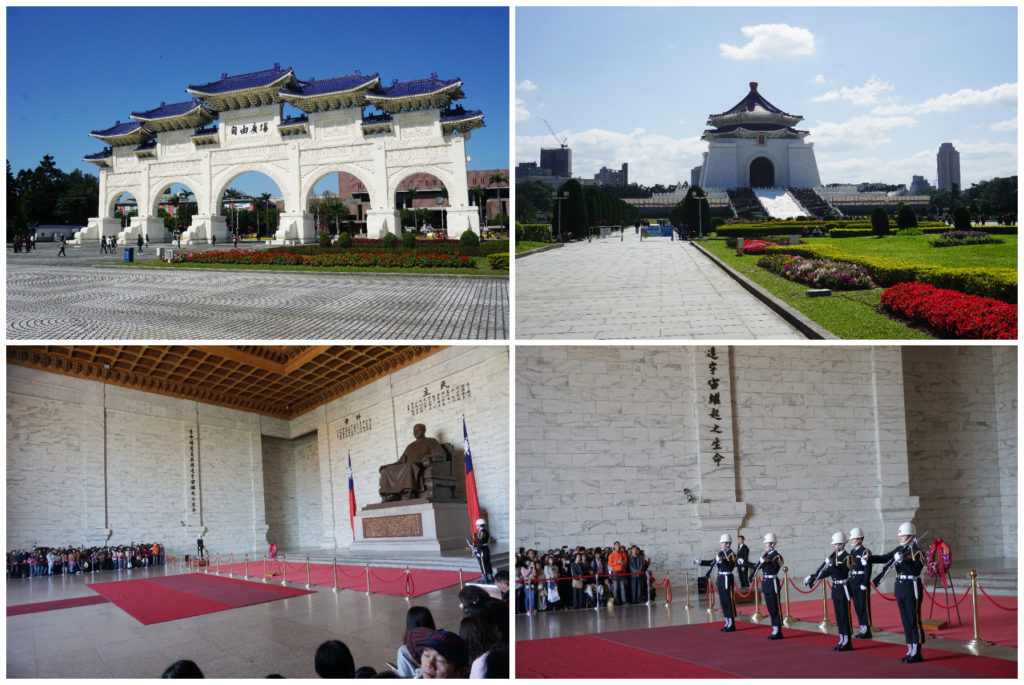
The Gates to Memorial Square, Beautiful gardens, the statue of Chiang Kai-Shek, and Changing of the Guard
We had timed our visit nicely and waiting patiently (along with many others!) to watch the highly polished, dramatic and perfectly choreographed sequence as they swapped positions with the new guards.
Yongkang Street
Yongkang Street is the where the Taipei alley culture all started. It has restaurants and cafes that cater to all budgets. Yongkang Street and its neighbouring alleys are home to more than 30 eateries. This does not include night market carts and small merchants that line the streets selling all sorts of food. You can find Korean, Japanese and Western, all mixed in together.
Maokong Shan Cable Car
Always attracted to gondola’s we made our way to the Maokong Shan Cable Car.
This ride opened in 2007 and travels for 4.3 km to Maokong which is known for its wide variety of teahouses. It can be quite a relaxing break from the busy city (if it wasn’t so crowded).
We usually try to arrive at these attractions quite early to avoid the queues. Unfortunately, we weren’t quite able to get there as early as we would have liked so we joined in the queue. It wasn’t too long so quite manageable.
The start of the cable car is at the Taiwan Zoo so it is a popular activity for families to do in conjunction with their zoo visit.
There are 3 stations you can stop off so prices depend on the number of stations travelled. We stayed on until the 3rd station so it cost us $120TWD/$5.70NZ each one way.
Maokong was quite a quaint village and yes, there were a lot of teahouses and eatery options. There were some quite nice views back towards Taipei City.
The return ticket has to be purchased from the station you are departing from. So this meant that it was back in another queue for us to come back down.
Long Shan Temple
I don’t know what it is about temples. We have seen literally hundreds of them on our travels over the past 14 months but we can’t seem to resist going to see ‘just one more’. I think that it is just the fact that they are just so darn old. They are all different and the features are often so lovingly restored to such a high standard.
So maybe it was for this reason that we hunted out Mengjia Longshan Temple. This well-known temple was built in 1738 as a gathering place for Chinese settlers. The temple has stood the test of time and lasted not only through natural disasters but also world wars.
The temple was a target by the American bombers during WW2 after they had received information that the Japanese were hiding arms inside. After suffering considerable damage, Taipei residents have continuously renovated and improved the temple and surrounding grounds.
We arrived right on prayer time and the temple was surrounded by locals, all chanting prayers and incantations. The chanting was perfectly in time and their voices echoed around the closely surrounding buildings and it was quite an enchanting sound.
Yuanshan Scenic Area/ The Grand Hotel
Yuanshan is the first park established in Taiwan in 1897. There were a variety of tracks for hikers or day walkers to enjoy and all catering for different abilities. There were some great looking tracks to take which we could choose, all of varying lengths.
No matter which trail you chose, there was a hill climb at the start which takes you 321 metres above sea level. We worked out a trail to follow which wasn’t going to be too strenuous for my limited lung capacity. We ultimately wanted to end up at The Grand Hotel.
The Grand Hotel could easily be mistaken for some sort of elaborate temple instead of a 392 room hotel. It was opened in 1973 and has played host to many foreign dignitaries who have visited Taipei.
It is one of the world’s tallest Chinese Classical Buildings standing at 87 metres high.
I don’t think that it will be on Kiwis Fly the Coop travel list of lodgings any time soon!!
National Revolutionary Martyrs’ Shrine
The Martyrs’ Shrine was built in 1969 to honour the fallen soldiers after the Chinese Civil War as well as various other revolutions prior.
It is home to 390,000 spirit tablets honouring the lives and sacrifices of the soldiers during the war against the communists in mainland China.
Although it is considered to be a popular tourist destination to witness the hourly Changing of the Guard, the numbers of spectators were quite low thankfully.
Although the Martyrs Shrine is located in Taiwan, most of the soldiers were born in mainland China. Taiwan was ruled by Japan throughout World War II. About 200,000 Taiwanese who lived under Japnese rule served in the Japanese Imperial Army.
Juifen Old Street
When we were doing our research on Juifen Old Street, it sounded right up our alley (pardon-the-pun). Juifen is a decommissioned gold mining mountain town, originally built by the Japanese. It is now a maze of lanes and alleyways which oozes history and culture.
It was initially an isolated village until the discovery of gold during the Japanese occupation in the late 1800’s. This quickly developed the town due to the gold rush. We could certainly see the Japanese influence in both buildings and culture.
We saw fenced-off entrances to some of the old mines which still remain intact today. During World War II the town housed a Japnese POW camp where captured soldiers (mainly British) were forced to work in the gold mines.
Besides the main roads, there are numerous small alleys and lanes that snake around the area and sometimes even run beneath buildings.
We had a great half day getting lost amongst the alleyways and soaking up the laid-back vibe of the village. Thankfully it was still relatively quiet as we got there nice and early. We avoided the crowds that were starting to gather by the time we were making our way back to the city.
Traditional Food of Juifen
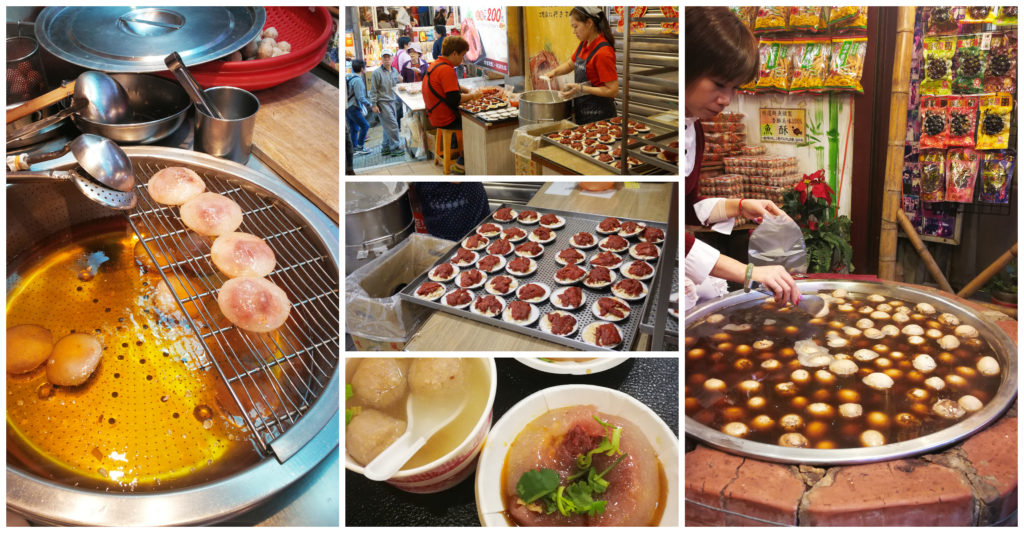
Red Vinasse Taiwanese Meatballs (steamed ball of red fermented rice wrapped inside a translucent, gelatinous bubble made of rice and sweet potato flour). Served with garlic paste, chilli and rice flour.
Fish and pork balls are a common favourite too
Click on the link below for a short video of our highlights in Juifen Old Street.
Elephant Mountain
I figured that after a few days in Taipei, that I was feeling well enough to conquer Elephant Mountain.
Being easily accessible to the MRT Elephant Mountain is 183 metres high and has various hiking trails to the top.
Officially known as the Xiangshan Hiking Trail Park, it is a popular destination for locals to get out and enjoy nature, all within close proximity to the city.
The trail we took got us to the summit in about 25 minutes, stopping regularly to catch my breath. There were plenty of photo opportunities along the way and great views of the city and Taipei 101 from the top.
Taking a different track down gave us different scenery and landscapes. It was an enjoyable hike.
Taroko Gorge and National Park
Taroko Gorge and National Park was a day trip we took while we were staying in Taipei. Click here to read our blog and see a video on our great day out and how we did it.
Below is a video of the highlights of our stay in Taipei.
